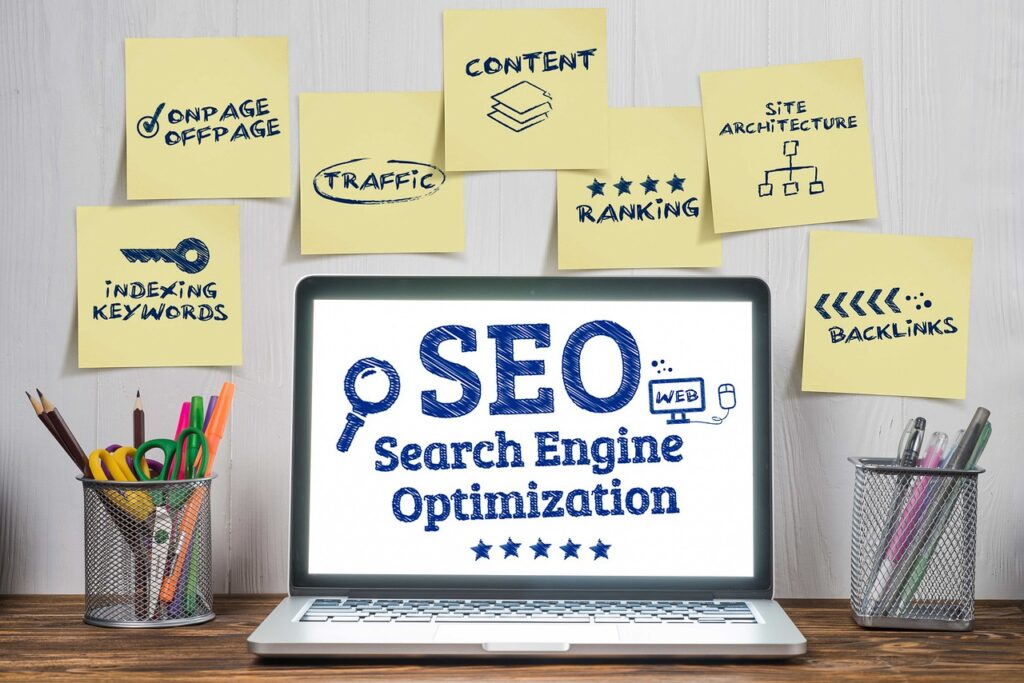Search engine optimization
Search Engine Optimization, is a crucial aspect of web designing and digital marketing. It refers to the practices and techniques used to optimize websites and improve their visibility on search engine results pages (SERPs). Here are some key points about SEO in the context of web design:
- On-Page SEO: This involves optimizing individual web pages to rank higher and earn more relevant traffic in search engines. Key elements include:
- Keyword Optimization: Researching and using relevant keywords throughout the content, headings, meta descriptions, and URLs.
- Content Quality: Creating high-quality, valuable content that satisfies user intent and incorporates targeted keywords naturally.
- Meta Tags: Writing compelling meta titles and descriptions that include keywords and encourage clicks from search results.
- Technical SEO: This focuses on the backend of a website to ensure it can be crawled and indexed effectively by search engines. Key technical aspects include:
- Site Structure: Designing a clear and organized site structure that allows search engines to understand the hierarchy and relationship between pages.
- Page Speed: Optimizing page loading times to improve user experience and SEO rankings.
- Mobile-Friendliness: Ensuring the website is responsive and performs well on mobile devices, which is crucial for both user experience and search engine rankings.
- Off-Page SEO: This involves activities conducted outside of the website to improve its authority and relevance. Key off-page SEO practices include:
- Link Building: Earning high-quality backlinks from reputable websites to increase authority and improve search engine rankings.
- Social Media: Leveraging social media platforms to promote content and engage with audiences, which can indirectly impact SEO.
- SEO-Friendly Design: When designing a website, it’s essential to consider SEO best practices from the outset. This includes:
- URL Structure: Using descriptive and keyword-rich URLs that are easy for both users and search engines to understand.
- Image Optimization: Optimizing images with alt text and descriptive file names to improve accessibility and SEO.
- Structured Data: Implementing structured data markup (Schema.org) to provide search engines with additional information about your content.
Overall, integrating SEO considerations into web design ensures that websites not only look great but also perform well in search engine rankings, driving organic traffic and achieving business goals.

